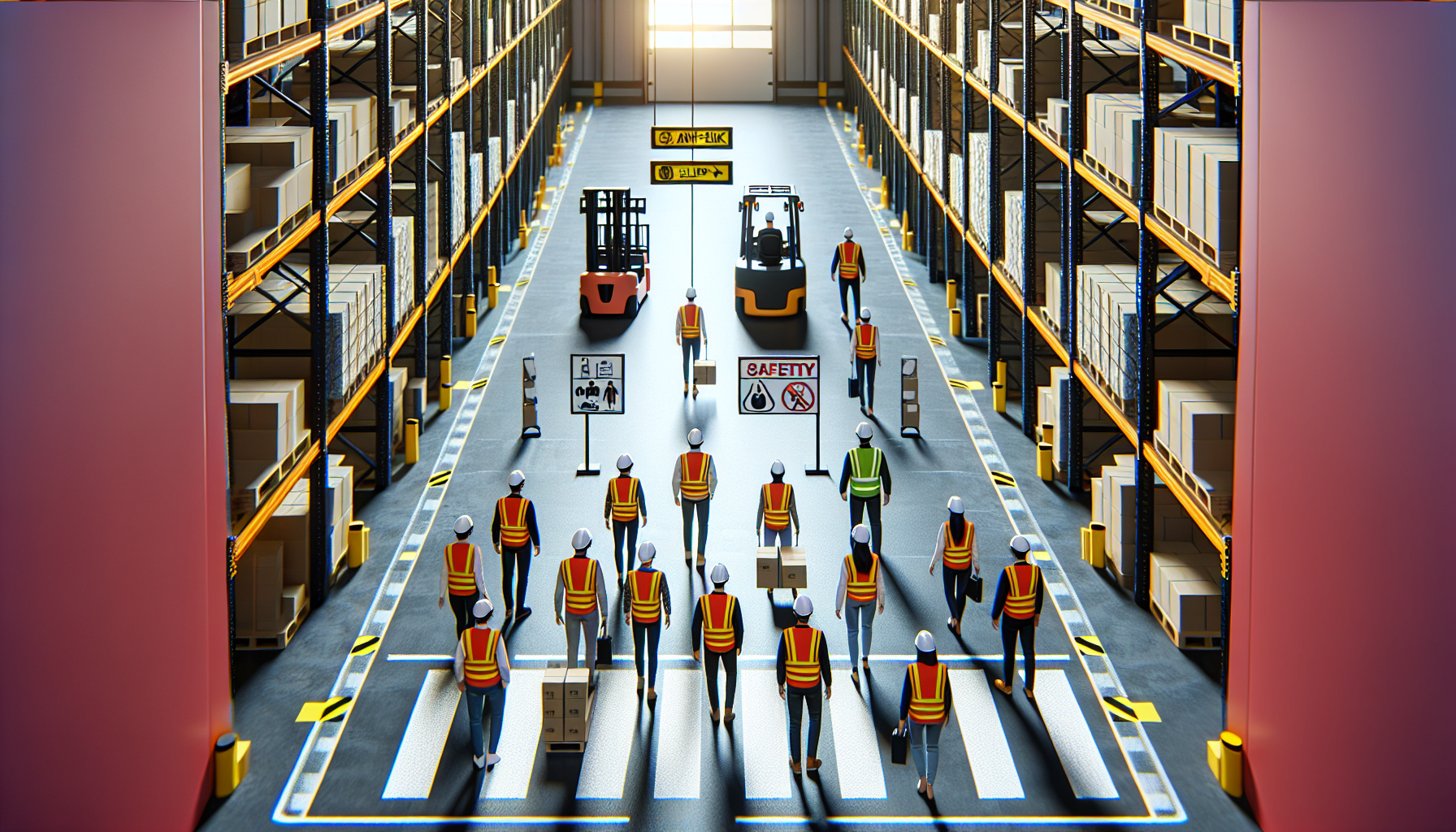Warehouse safety is of paramount importance in any industry. With the high volume of activities happening within a warehouse, it is crucial to prioritize the well-being of employees and ensure a safe working environment. One area where warehouse safety standards often need improvement is in the implementation of walkway safety measures.
The Importance of Walkway Safety
Walkways are a critical part of any warehouse as they facilitate the movement of employees, equipment, and materials. However, without proper safety measures in place, walkways can become hazardous areas prone to accidents and injuries. Implementing walkway safety standards not only reduces the risk of accidents but also improves productivity and efficiency within the warehouse.
Here are some essential steps to help you implement walkway safety standards in your warehouse:
1. Conduct a Safety Audit
The first step in improving walkway safety is to conduct a comprehensive safety audit of your warehouse. Walk through the entire facility and identify potential hazards and areas that require immediate attention. Look out for obstacles, uneven surfaces, poor lighting, and any other factors that could pose a risk to employees.
Create a checklist and document any safety concerns or potential hazards. This audit will serve as the foundation for developing an effective walkway safety plan.
2. Designate Clearly Marked Walkways
Clear and well-defined walkways are essential for maintaining pedestrian safety in the warehouse. Designate specific areas for employee foot traffic and clearly mark the pathways with durable floor markings. This ensures that employees can easily identify and follow the designated walkways, reducing the risk of accidents.
In addition to clear markings, consider using barriers, bollards, or safety rails to separate walkways from forklift traffic and other machinery. This creates a physical separation and provides an additional layer of protection for employees.
3. Provide Proper Lighting
Good lighting is crucial for maintaining walkway safety in a warehouse. Insufficient lighting can lead to accidents and increase the risk of tripping and falling. Ensure that all walkways are well-lit, especially in areas with high foot traffic or low visibility.
Consider installing motion-sensor lighting or LED lights that provide consistent and bright illumination throughout the warehouse. Additionally, regularly inspect and replace any burnt-out or dim lights to maintain optimal visibility.
4. Implement Forklift Pedestrian Detection Systems
One of the most effective ways to enhance walkway safety in a warehouse is by implementing a forklift pedestrian detection system. These advanced technologies use sensors and alarms to detect and alert both forklift operators and pedestrians of potential collisions.
By installing a forklift pedestrian detection system, you can significantly reduce the risk of accidents and injuries caused by the interaction between forklifts and pedestrians. HCO Innovations offers an innovative Forklift Pedestrian Detection System that provides real-time data and alerts to improve safety in warehouse environments. Learn more about their solution here.
5. Provide Ongoing Safety Training
Investing in ongoing safety training for warehouse employees is crucial for maintaining walkway safety. Conduct regular safety training sessions to educate employees about the importance of adhering to walkway safety standards and the potential hazards they might encounter.
Training should cover topics such as proper use of walkways, avoiding distractions while walking, and understanding the significance of designated pathways. Regular reminders and refresher courses will help reinforce safety protocols and ensure that everyone is up to date with the latest safety measures.
6. Regularly Inspect and Maintain Walkways
Regular inspections and maintenance of walkways are essential to identify and address any safety concerns promptly. Assign a responsible team or individual to conduct regular inspections of walkways, checking for any damages, obstructions, or signs of wear and tear.
Develop a maintenance schedule to address any repairs or maintenance needed for walkways promptly. This includes fixing cracks or uneven surfaces, removing debris, and replacing worn-out floor markings.
Conclusion
Implementing walkway safety standards is crucial for creating a safe and efficient working environment in your warehouse. By conducting safety audits, designating clearly marked walkways, providing proper lighting, utilizing forklift pedestrian detection systems, offering ongoing safety training, and regularly inspecting and maintaining walkways, you can significantly reduce the risk of accidents and injuries.
Remember, investing in walkway safety not only promotes the well-being of your employees but also contributes to increased productivity and cost-effectiveness within your warehouse operations. So, take the necessary steps today to enhance walkway safety in your warehouse and reap the benefits.

